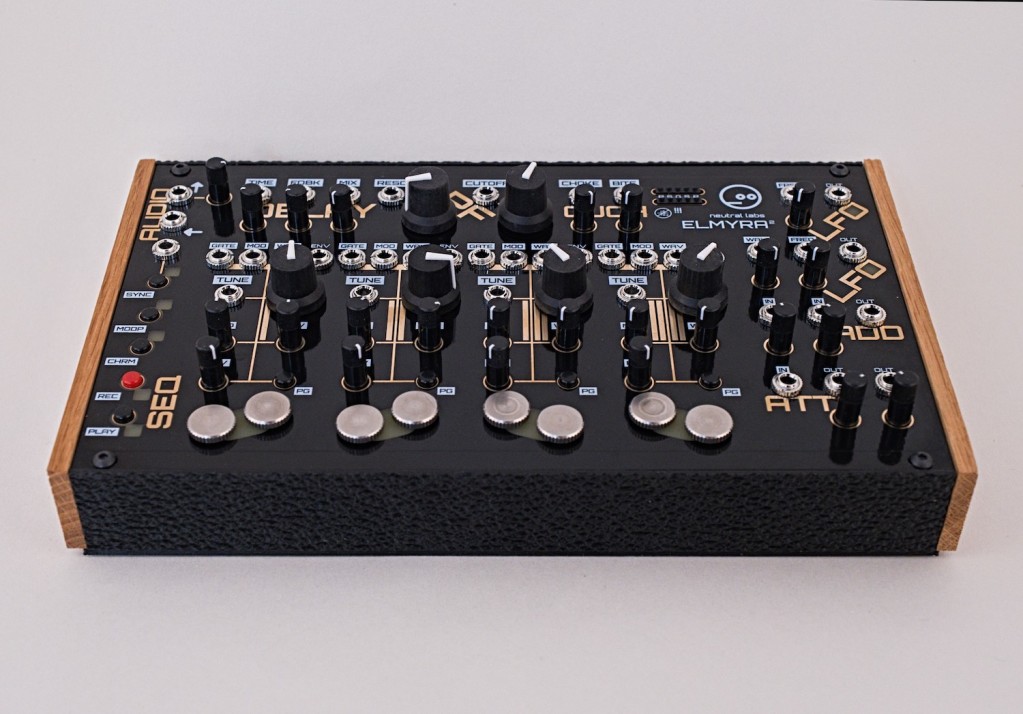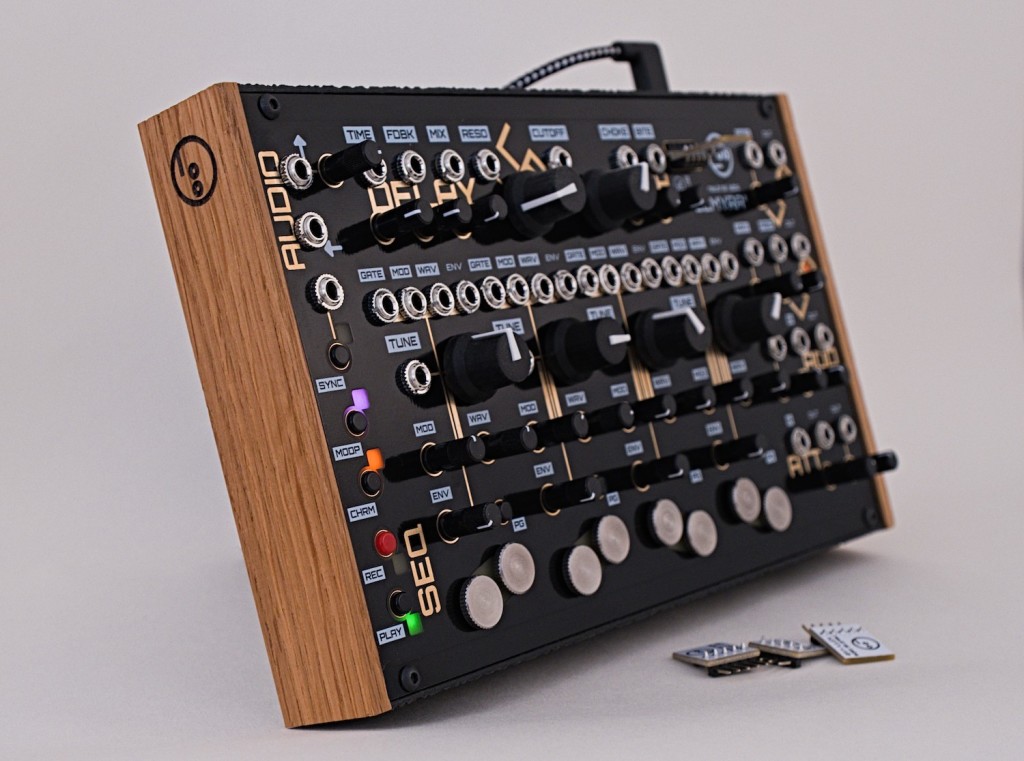It’s the launch day for Neutral Labs’ Elmyra2, a hybrid digital-analog “platform for microtonal sonic exploration.” From experimental sounds and timbral play to ambient soundscapes and drones, this one looks promising. (And yes, it’s a sequel, though going way beyond the original.)

This is a rich synth platform, 4-voice digital-analog hybrid with 31 modulation targets, 4 sequencers with polyrhythmic* capabilities, delay, per-voice effects, filters, onboard LFOs, and utilities. That is, the 42HP here gives you a semi-modular selection of sonic tools, assembled as an integrated instrument, but also patchable into other larger modular environments. (I’m not going to get into the polyrhythm versus polymeter thing but … yeah, it’s capable!)
Neutral Labs has been promising this one for a while. They write CDM with their very compelling elevator pitch:

Elmyra 2 is a major upgrade over the first version (which was originally conceived a purely open-source project). This one is a mature commercial product and while there is still a DIY option, the focus is on the assembled device market. It’s available as a desktop synth or 42 HP Eurorack module, with the option to rack the desktop version as well. There are 41 patch points and 31 modulation targets, 4 voices with up to 12 oscillators total, 9-per voice effects, VCF switchable between 4 types (on top of the per-voice LPF and HPF filters), 4 sequencers, a delay, a unique analog shaping/distortion circuit, 2 LFOs, a bunch of utilities, a lo-fi reverb and much more. It’s essentially a full-blown semi-modular microtonal workstation for drones and experimental sounds. As with my modules Scrat (VCF) and Nijel (distortion) – you reported on those previously – there is an option to adjust the specific sound characteristics using preset cards (set of 4 included) or even individual components like diodes or capacitors that can be plugged directly into the front panel.

About that original Elmyra – it was a 10-bit digital synth originally inspired by the Lyra-8. It’s a cute little box – now out of production – but almost more like a sketch for what Elmyra2 is. Thonk notes they have the original in DIY and assembled, too (plus of course the new one).
And wow is there a lot in the new one – it’s a multi-effects unit as well as a modulation playground. And there are Buchla-style preset cards (all the rage with the kids these days). You can patch in external audio. There’s a lo-fi reverb and bitmangler and dual sub-oscillators. It’s all made of plant-based bioplastic and native German oak, handmade here in Germany.
Check the full specs:
https://neutral-labs.com/elmyra2
DIY it or get a pre-built version.
There are so many good ideas here, I do hope we even see a few make their way into other modules (and you should check their Eurorack module line while you’re at it).
Neutral Labs also has a fascinating mission, exploring sustainability and non-restrictive licensing – check it out. That’s well worth a separate discussion, as it gets into even details like including more sustainably-produced solder.
Updated: About the “microtonal” part – I’m slightly of mixed mind on this. So, on one hand, it’s a little disappointing that microtonal here appears to mean only some select fixed tunings. On the other, there’s something to be said for really learning particular tunings and what you can do with them, so I can’t entirely fault them for that – plus, you could theoretically do more via CV, though that’s true of anything with a CV tuning input. Here’s the description of the tuning portion:
This sets the frequency of the voice, which can be changed either continuously or in quantised (chromatic) fashion, according to the current CHRM setting. Microtonal scales are supported, as is portamento, see Advanced Settings. The corresponding CV input follows the Eurorack 1V/octave
standard. While a jack is connected to the input, the TUNE knob has no function.
Those scales are 7-, 9-, 15-, 17-, and 12-EDO, fixed to A0 = 27.5 Hz. I’ll try to follow up more on this.
I’d just say this is about sound exploration more than “microtonal” per se, and then these additional tunings onboard are nice to have.
Anyway, speaking of reduced carbon, I am writing this from the Deutsche Bahn RE1, heh… but since they’re neighbors (in Leipzig, not Berlin!), we’ll have to catch up!
Videos:
